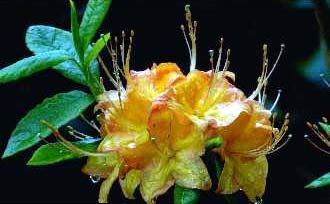If you have a particular favorite among your rose bushes, why not increase your stock. Cuttings will allow you to propagate more of that special bloomer.
There are three ways to propagate roses: by planting seeds, by taking cuttings, and by budding. While rose cuttings need to establish their own root system, cuttings from some varieties flower as soon as the following summer.
Advantages of Cuttings
Rooted cuttings are the easiest way to propagate roses and always turn out true to type. Experienced gardeners have learned, however, that cuttings of yellow varieties do not root as readily as reds and pinks. Floribundas and ramblers do well from cuttings. Roses raised from cuttings produce fewer suckers since they grow on their own roots. In addition, plants produced by cuttings have a tendency to live longer than those grown from budding.
The only disadvantages are that it takes much longer to obtain mature roses from plants grown from cuttings than those grown by budding, and that second generation plants sometimes develop weaker roots than those normally used as root-stocks for budding.
Healthy Stock Is Needed
When taking cuttings, it is important to select well-ripened shoots. Cuttings from soft, sappy wood will not grow roots easily.
Cuttings should be taken in summer or early fall while the soil is still warm but not overly wet. A cutting should be approximately 6 to 10 inches long, cut from the lower portion of a strong stem that has just dropped its petals. Make cuts at the base and top, just beneath joints or buds. Use sharp pruning shears to cut on a slant about 1/4 inch above a bud. Trim the cuts with a sharp knife. All leaves, with the exception of the top two or three, should be cut or snipped, never pulled off. Prepared cuttings should then be placed in water or in a wet, moisture-retentive cloth until planting, which should be done as soon as possible.
Rootings From Cuttings
The best rootings come from cuttings that enjoy humid surroundings and sufficient indirect sunlight. An ideal setting for rootings is a cold frame, positioned on the north side of a wall, hedge, or fence. Small glass containers will function well as miniature cold frames if cuttings are small enough. The best soil is porous and well drained, mixed with 2/3 coarse sand or perlite. To assist rooting, gardeners have been known to dip the bottom end of each cutting in water and then into a hormone rooting powder, removing any excess powder before placing in the soil. If the soil is particularly rich, dipping is not necessary for successful growth. Plant cuttings to about � their lengths, and pack soil firmly against them. Water thoroughly, cover cuttings with a jar, or close the frame.
Frames and jars should be checked with regularity to be sure the inner atmosphere is not overly saturated. If water droplets gather on the inside, cuttings need a little ventilation. Prop frames up a bit, or prop jars on stones so air can enter from below.
After a few weeks, transplant the rooted cuttings to a wedge-shaped trench about 9 or 10 inches deep, filled with a 3-inch mixture of equal parts of sand and peat. Space them 5 to 6 inches apart. Fill the trench with soil and pack well so that the cuttings can stand straight. Cuttings must remain in this position until the following autumn, when they can be dug up. Some will not root, but a good number will. Take up the rooted plants and replant them in permanent beds.
TIPS: TRIMMING CUTTINGS
When trimming cuttings, eliminate buds that will be below the ground; this will minimize sucker growth. Snip off the lower leaves of cuttings; do not pull them off. Plant 2/3 to 3/4 of the total length below the ground to assure rapid root formation.
It is possible to propagate roses from either hardwood cuttings taken during the dormant pruning season, or from softwood cuttings taken during the blooming period. Dormant-season cuttings should be the thickness of a pencil, and about 8 inches in length. A convenient way to root either kind of cutting is in a pot with a light, sandy soil mix. Small pots can be easily moved to the ideal setting of indirect sunlight.


